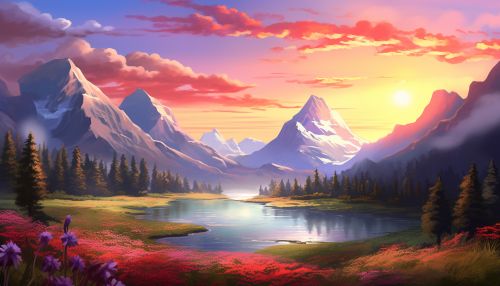Digital Painting
Introduction
Digital painting is a method of creating an art object (painting) digitally and/or a technique of creating digital art in the computer. As a method of creating an art object, it adapts traditional painting medium such as acrylic paint, oils, ink, watercolor, etc. and applies the pigment to traditional carriers, such as woven canvas cloth, paper, polyester etc. by means of a computer, a digital graphics tablet and stylus, and software. Traditional painting is event driven where the artist simultaneously commands and executes the artwork. The artist, in the digital environment, is challenged to translate this ability to the digital realm. The digital painting is the result of the digital and traditional painting techniques influence on each other. Software applications or apps are an essential aspect of the digital painting process.
History
Digital painting found its way into the art scene in the early 1980s. It was pioneered by artists like David Em and Jean Claude Golvin. The new medium did not fit into the traditional art categories, and it took some time for the art community to accept this new form of art. A factor contributing to digital painting's acceptance in the art community was the resources and tutorial programs available within communities.
Techniques
Digital painting differs from other forms of digital art, particularly computer-generated art, in that it does not involve the computer rendering from a model. The artist uses painting techniques to create the digital painting directly on the computer. Digital painting software such as Corel Painter, Adobe Photoshop, ArtRage, GIMP, Krita and openCanvas give artists a similar environment to a physical painter: a canvas, painting tools, mixing palettes, and a multitude of color options. There are various types of digital painting, including impressionism, realism, and watercolor.


Software
There are many types of software available for digital painting, including both paid and free versions. Some of the most popular software includes Adobe Photoshop, Corel Painter, and GIMP. Each software has different features and tools that can assist an artist in their work. For example, Photoshop is known for its advanced editing tools and is widely used by professionals. Corel Painter is known for its realistic brushes and rich textures. GIMP, on the other hand, is a free software that is great for basic editing and painting.
Hardware
In addition to software, hardware plays a significant role in the digital painting process. This includes computers, graphics tablets, stylus graphics pens, and printer paper. Graphics tablets allow the artist to work off the computer screen, which provides more freedom and control over the artwork. The stylus pen is used to create the artwork and can be pressure sensitive, meaning the harder you press, the thicker the line. Printer paper can vary in weight and texture, providing different effects for the artwork.
Advantages and Disadvantages
Like any medium, digital painting has its pros and cons. One advantage is that it's more forgiving than traditional painting. If an artist makes a mistake, they can simply undo it. It's also more portable and artists can work on a digital painting for as long as they want, wherever they want. Additionally, digital painting allows for easy duplication and distribution of art. On the downside, it lacks the tactile experience of traditional painting and can be difficult to learn if you're not familiar with the software.
Impact on the Art Industry
Digital painting has had a significant impact on the art industry. It has opened up new opportunities for artists, who can now work in a digital medium and reach a global audience. It has also changed the way art is produced and consumed. For example, digital art can be created and sold directly from the artist to the consumer without the need for a physical gallery. Digital art is also more affordable than traditional art, making it more accessible to a wider audience.
